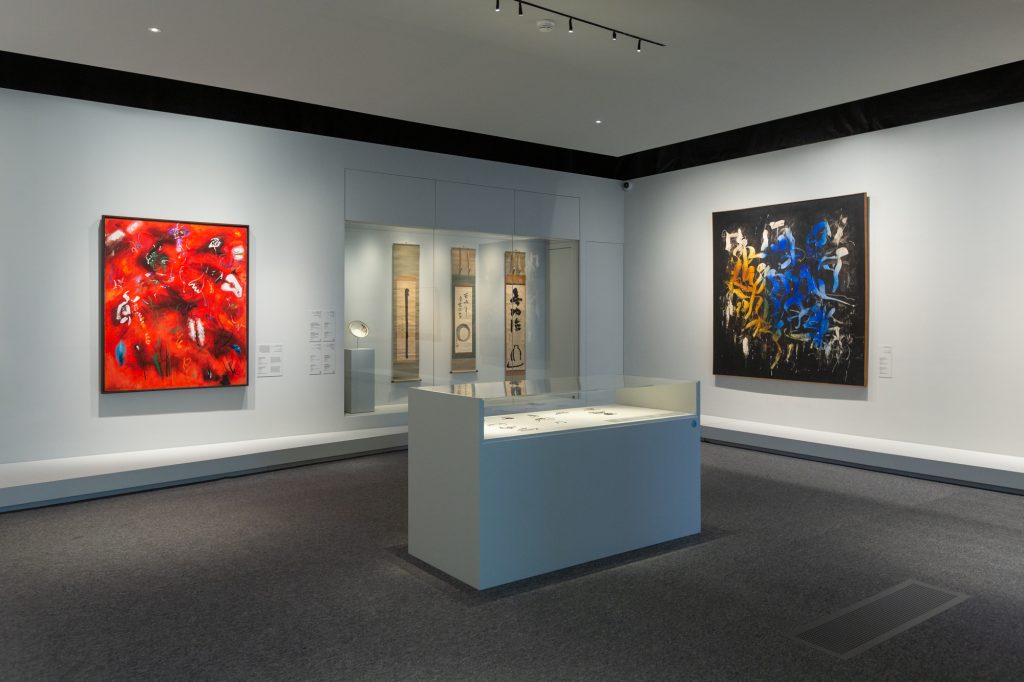
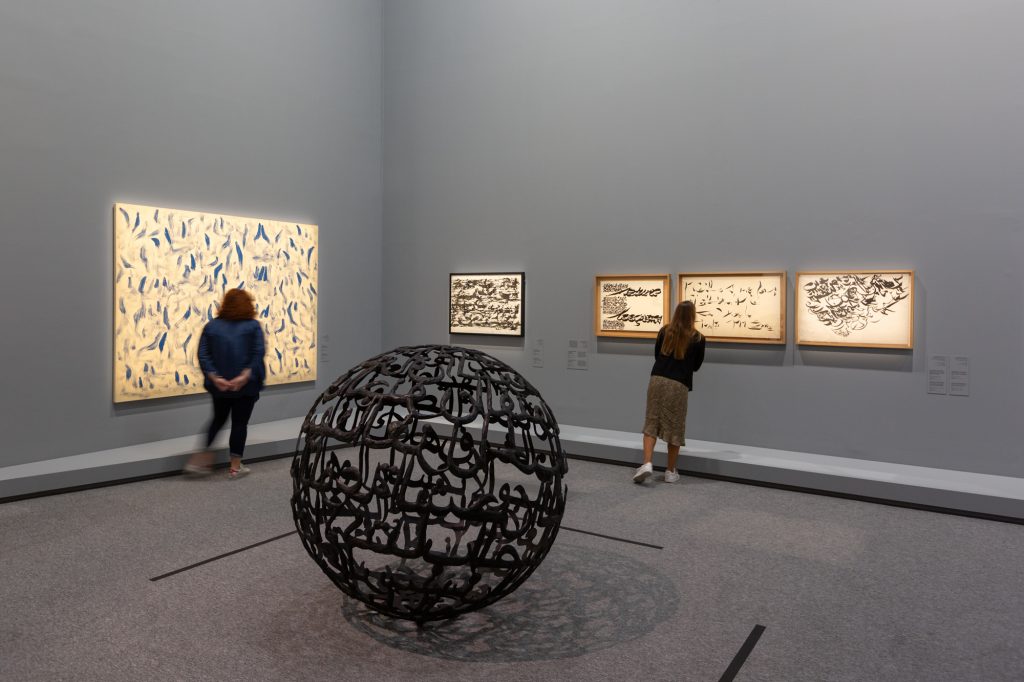


Amin Abbas
DUBAI: “Abstraction and Calligraphy – Towards a Universal Language” is Louvre Abu Dhabi’s first international exhibition of 2021, inviting visitors from to explore the dawn of modern abstraction through sign and symbol, tracing origins to Asian and Arabic calligraphy and charting sites of mutual inspiration around the world.
Curated by Didier Ottinger, assisted by Marie Sarré, the exhibition marks a second major collaboration between the Centre Pompidou and Louvre Abu Dhabi. This international exhibition is sponsored by Montblanc, a Maison whose innovative craftsmanship continues to influence the culture of writing.
Bringing together more than 80 masterworks on loan from 16 partner institutions, with six works from Louvre Abu Dhabi’s own permanent collection, the exhibition is showcasing how 20th century abstract artists including Paul Klee, André Masson and Jackson Pollock.
Speaking exclusively to Arab News Japan, Alice Querin, Senior Collections and Database Officer at Louvre Abu Dhabi said: “It was not easy for us to organize the exhibition as we had planned for it over two years. A full year of planning and organizing was done during the pandemic. We organized this exhibition with Centre Pompidou in Paris & France museums who are our long-term partners.”
Querin said this was the museum’s first exhibition in 2021, with more than 80 masterworks from 16 lenders from all over the world.
“The exhibition is part of the third season of Louvre Abu Dhabi theme ‘East & West exchanges’ & we wanted to create about Abstraction & abstract artists in the early 20th century who were influenced by the artistic expressions of the east,” she explained.
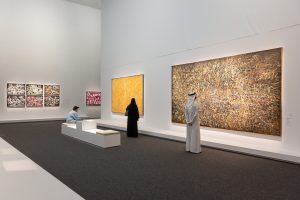
Alia Al Shamsi, Acting Cultural Programming Manager at Louvre Abu Dhabi said that serious safety measures are taken for visitors at the museum.
“The exhibition is considered as extending the narrative for international events for arts & culture, we are targeting our community at this exhibition. We are working together with many institutions in Abu Dhabi for the exhibition to reach wide range of people,” Al Shamsi added.
The three Zen paintings in the exhibition illustrate symbols representing the allegory of the ubiquity of thought developed in Buddhism. The Enso, the circle without beginning or end, is considered the manifestation of the Buddha’s wisdom springing from the Absolute Essence of Nature. As the symbol of the Perfect Unity, it transcends all opposites and empties them at the same moment.
The hanging scroll (kakemono) by Enji Tōrei, represents one of his most appreciated themes. the artist inscribed two semicircles. The one on the right is realized with a thinner brush style. The vibrant stroke lends a suggestive dynamicity to the composition, giving the impression of eternal movement. The Zen Stick painting, by Jiun Onkō, represents a unique vertical linear stroke running down the middle of the scroll, a reflection on the concept of persistence. The symbol exemplifies a keisaku (警策), a flat wooden stick used by the master to “awaken” disciples during meditation sessions. The calligraphic result is extraordinary in its simplicity, and it is still possible to perceive the persistent duality of human experience.
The vibrant lines on the right create a contrast with the dense, compact effect of the ink on the left. In the middle of the scroll, at the left side of the staff, an inscription serves as a reminder of the perpetual presence of Buddhist law.
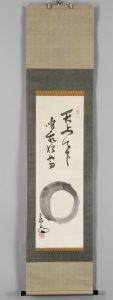
Allegoric figures of Bodhidharma, the patriarch of Zen Buddhism, have direct relations with the most popular koan. In the painting, Jiun Onkō depicts the figure in just three strokes, without technical virtuosity but with suggestive simplicity. Comparable qualities are found in the inscription “meritless” realised above by a broad brush fully charged with dense dark ink. It is pointless to describe the experience of Zen as expressed in art.
According to Zen perception, art stands by itself, without any meaning. Even though there is a complex background of symbols and allegories, a convincing interpretation is not always possible. Understanding Zen works hence means immersing oneself in the painting, and reaching enlightenment through an unconscious emptying of oneself.
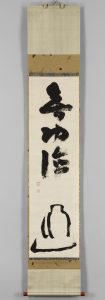
The show also focuses on 20th and 21st centuries’ Arab artists – from Dia Azzawi and Anwar Jalal Shemza, to Ghada Amer, Shirazeh Houshiary, Mona Hatoum and others – for whom the letterform was a continuous source of inspiration, freeing writing from its purely linguistic function and investing it with new artistic value.
The exhibition also features installations from two contemporary artists, eL Seed and Sanki King, demonstrating how artists today are still seeking new visual forms to respond to current societal changes.
To facilitate onsite engagement with the exhibition, Louvre Abu Dhabi’s Education team has developed a digital learning resource, which guides young visitors and their families through the exhibition space and its artworks. An animated character named Qalam will help visitors explore the designated trail and engage young visitors with selected artworks and artists. These interactions aim to inspire creative expression and help children learn about the history of pictograms, alphabets, and abstraction. Small groups can book a 45-minute Express Tour to explore the exhibition with a Museum Educator.
A detailed catalogue accompanies the exhibition, available in English, Arabic and French. It serves as an in-depth exploration of the themes, movements, and moments in the show.